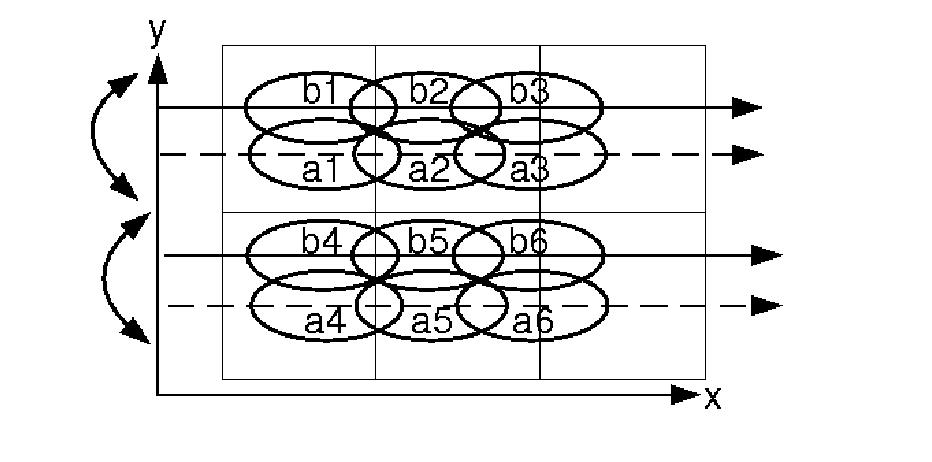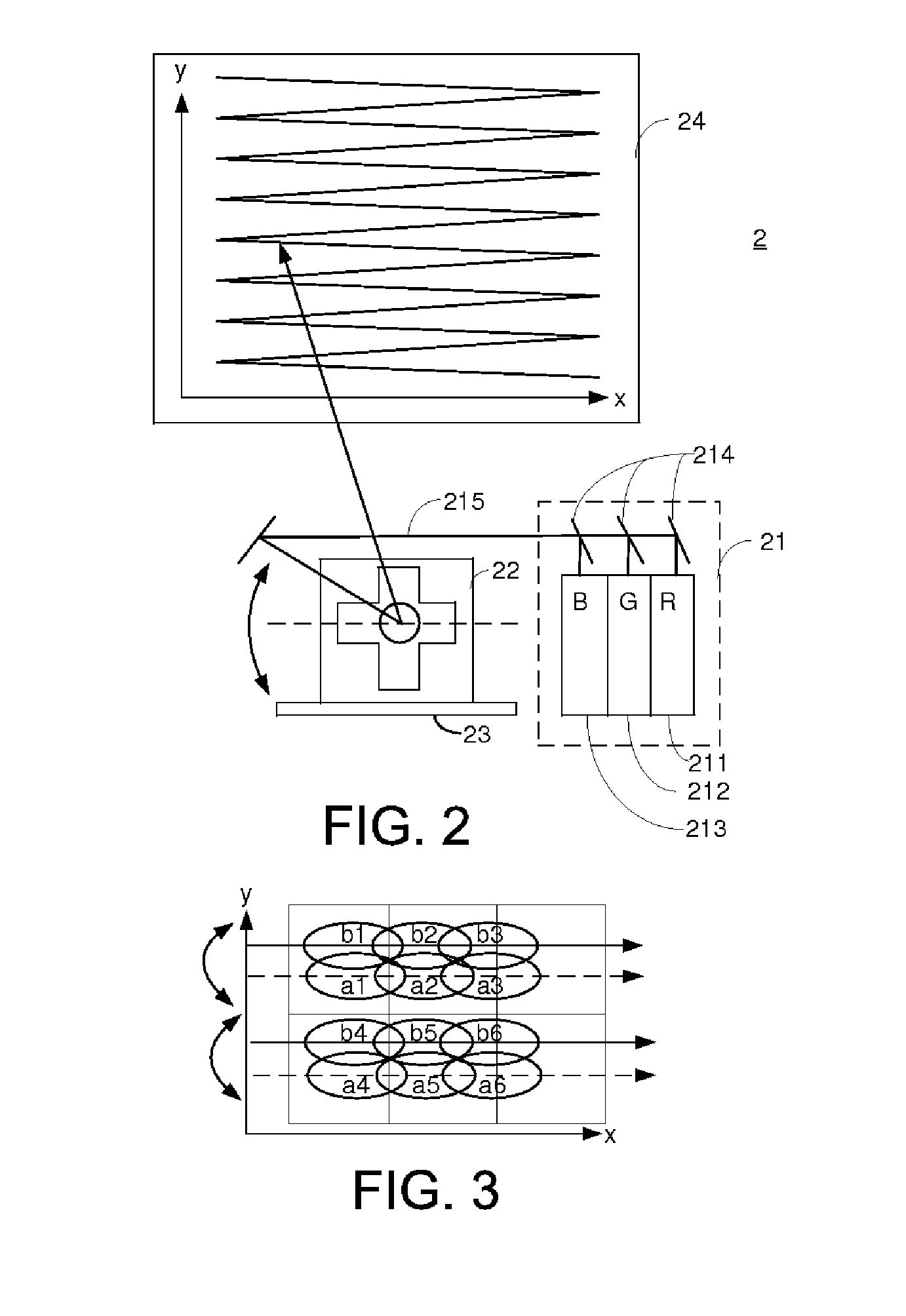Laser Scanning Projection System with Reduced Speckle Contrast and Speckle Contrast Reducing Method
a laser scanning and projection system technology, applied in projectors, color television details, instruments, etc., can solve the problems of reducing the speckle contrast of the laser scanning projection system, affecting the quality of the laser scanning image, so as to reduce the speckle contrast
- Summary
- Abstract
- Description
- Claims
- Application Information
AI Technical Summary
Benefits of technology
Problems solved by technology
Method used
Image
Examples
first embodiment
[0022]FIG. 2 schematically illustrates the architecture of a laser scanning projection system with reduced speckle contrast according to the present invention. As shown in FIG. 2, the laser scanning projection system 2 comprises an illumination unit 21, a scanning mirror module 22, a tilt angle adjustable element 23, and a projection surface 24.
[0023]The illumination unit 21 comprises a plurality of laser sources 211, 212, 213 and one or more optical alignment elements 214. In this embodiment, the laser sources of the illumination unit 21 comprises a red laser source 211, a green laser source 212, and a blue laser source 213, as are respectively indicated by “R”, “G,” and “B” in FIG. 2. In this embodiment, the illumination unit 21 comprises three optical alignment elements 214. Examples of the optical alignment elements 214 include but are not limited to dichroic mirrors. By the optical alignment devices 214, the red beam, the green beam and the blue beam from the red laser source 2...
second embodiment
[0033]FIG. 5 schematically illustrates the architecture of a laser scanning projection system with reduced speckle contrast according to the present invention. As shown in FIG. 5, the laser scanning projection system 5 comprises an illumination unit 51, a scanning mirror module 52, a driver 53, and a projection surface 54.
[0034]The illumination unit 51 comprises a plurality of laser sources 511, 512, 513 and one or more optical alignment elements 514. In this embodiment, the laser sources of the illumination unit 51 comprises a red laser source 511, a green laser source 512, and a blue laser source 513, as are respectively indicated by “R”, “G,” and “B” in FIG. 5. In this embodiment, the illumination unit 51 comprises three optical alignment elements 514. Examples of the optical alignment elements 514 include but are not limited to dichroic mirrors. By the optical alignment devices 514, the red beam, the green beam and the blue beam from the red laser source 511, the green laser sou...
PUM
 Login to View More
Login to View More Abstract
Description
Claims
Application Information
 Login to View More
Login to View More - R&D
- Intellectual Property
- Life Sciences
- Materials
- Tech Scout
- Unparalleled Data Quality
- Higher Quality Content
- 60% Fewer Hallucinations
Browse by: Latest US Patents, China's latest patents, Technical Efficacy Thesaurus, Application Domain, Technology Topic, Popular Technical Reports.
© 2025 PatSnap. All rights reserved.Legal|Privacy policy|Modern Slavery Act Transparency Statement|Sitemap|About US| Contact US: help@patsnap.com



